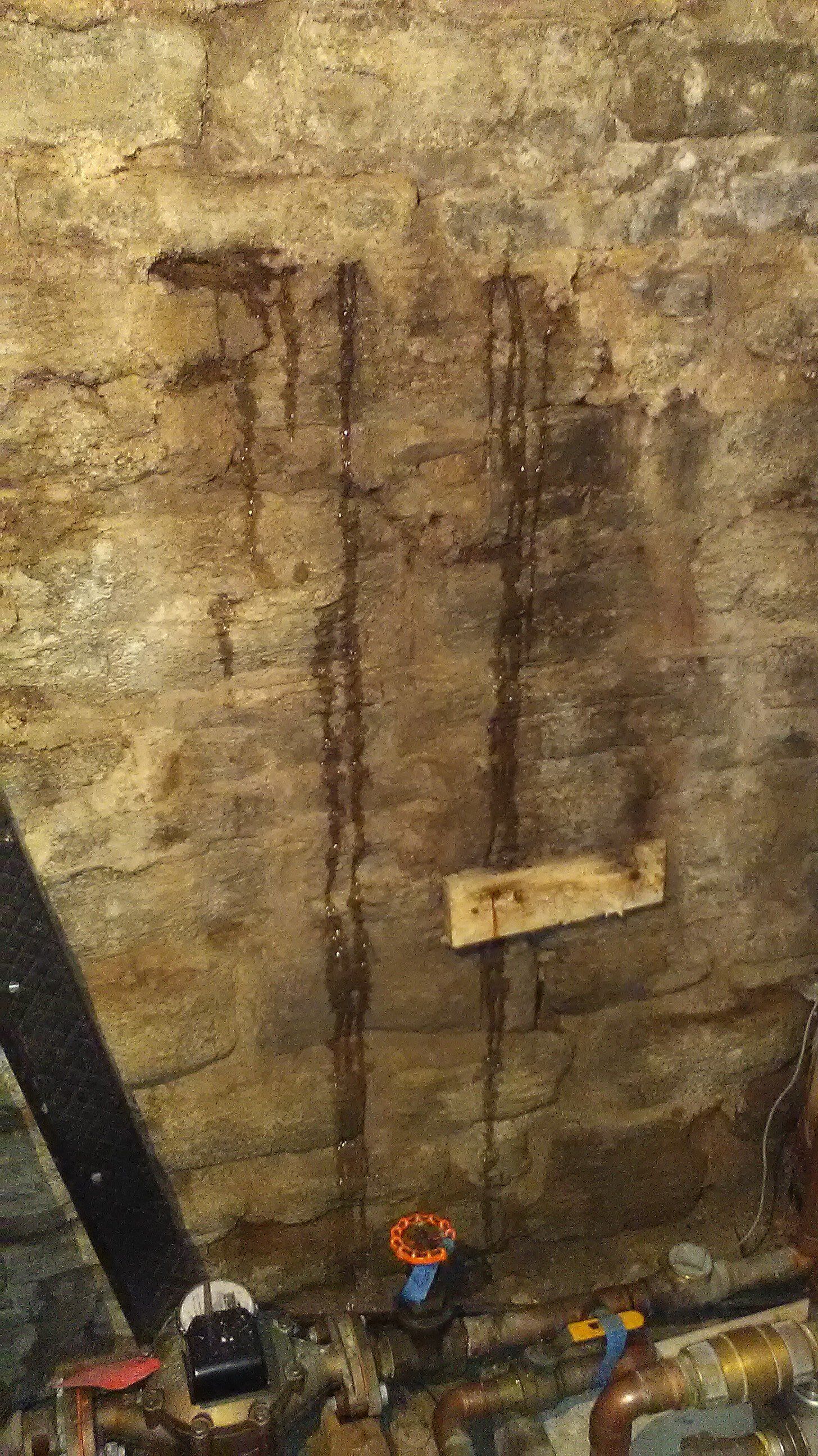This parking ramp in Roseville Minnesota has a beaver dam waterproofing system but see that stream of water under the gray box? The water has gotten so high because the system has gotten clogged with sand and dirt. There's even an underfloor drain-tile system, that's where the vertical pipe is coming from. Other areas of the system are also leaking because the caulk has gotten old and is no longer keeping the seams dry.
For some reason this system has started coming back and we're seeing more installs of it, a lot of contractors will bury it behind new walls put up in basements and you won't know you have it until it starts to stink or leak, both which will happen. Contractors are also putting up dimple board water channels or plastic sheet on the vertical basement walls to channel the water down, we like to call these mold factories, this is not waterproofing and we highly advise against it.
After using the other systems, these wet basement projects went with Great Lakes Waterproofing to solve their water issues. Great Lakes Waterproofing believes in Real Waterproofing, stopping the water before moves through the wall by creating a barrier with all-natural Bentonite.















